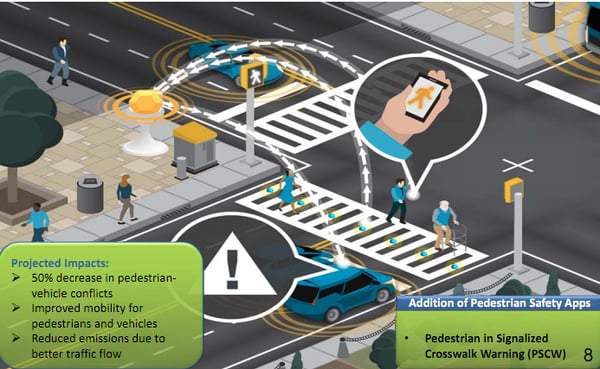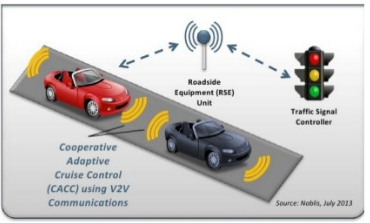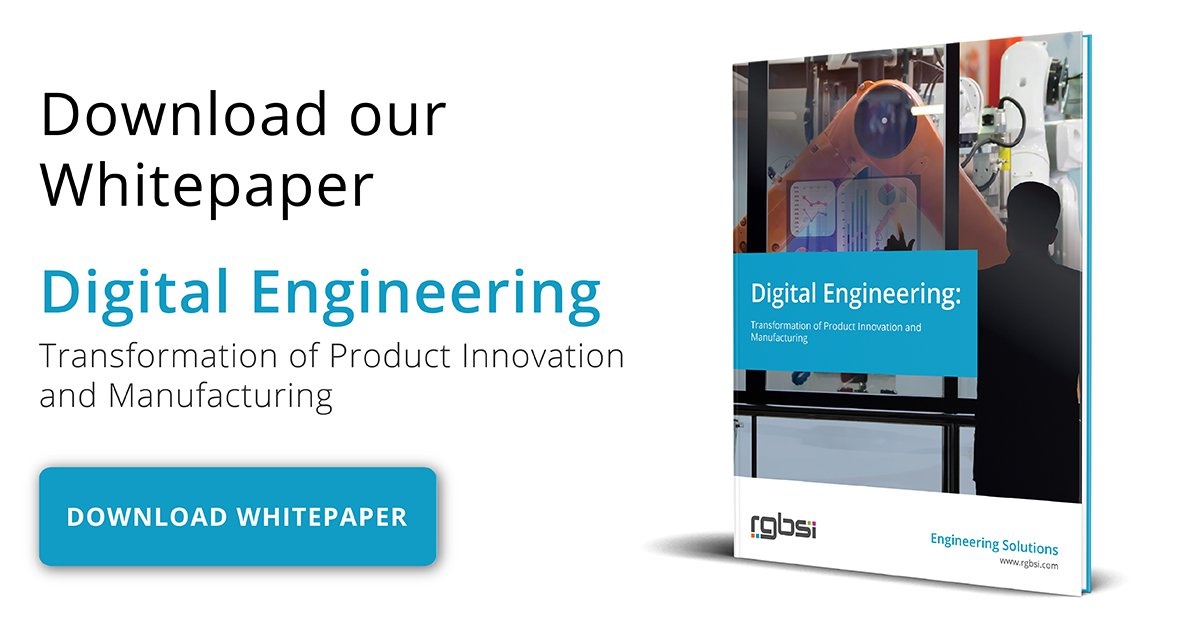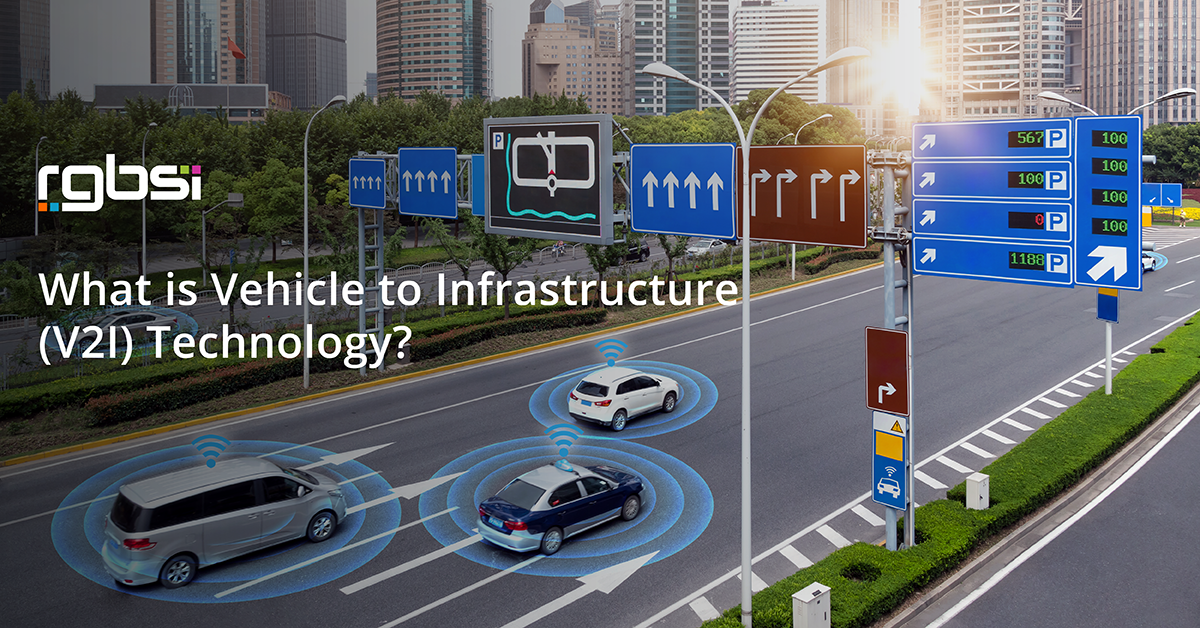
What is Vehicle to Infrastructure (V2I)?
Vehicle-to-infrastructure (V2I) technology is a communication framework that enables several vehicles to share information with a variety of devices supporting the highway system of a particular country. These devices consist of RFID readers, signage, cameras, lane makers, streetlights, and parking meters among others. Enabled by a network of hardware, software, and firmware, the V2I technology is typically wireless and bi-directional: information from infrastructure devices is easily transmitted to the vehicle through an ad-hoc network and vice versa. Similarly to the vehicle to vehicle (V2V) technology, the V2I employs dedicated short-range communication (DSRC) frequencies in the transmission of data.
V2I sensors are used in intelligent transportation system (ITS) to capture data and issue road users with real-time advisories about various incidents on the road: traffic congestions, construction sites, road conditions, parking zones et al. The technology is employed in traffic management supervision systems to set speed limits and modify signal phase and timing (SPaT) to improve fuel economy as well as flow of traffic.
V2I and Safety
As the internet of things improves around the globe, the automobile industry is preparing for monumental advancement in both private and public transportation. Regarding the realism that over 80% of road accidents could be avoided by adopting advanced vehicle connectivity, technology firms and automakers are gearing up to develop vehicle to vehicle (V2V) and vehicle to infrastructure (V2I) systems to improve safety and sanity on the roads. These technologies have the capacity to advance transportation in various ways: from prevention of collisions to the improvement of energy efficiency. With today’s automation systems, the commonly used technologies include sensors, radar, and cameras to enable drivers to look and analyze the surrounding. While these technologies are valuable, they cannot monitor hidden objectives and surprisingly, what is happening in other vehicles. V2V and V2I technologies allow vehicles to share data with each other in real time, enabling them to predict what is coming.
An example of V2I communications for connecting pedestrians. (Source: ITS DOT)
The Innovation of V2I
The potency and innovation of V2I technologies are ever-advancing and the automotive industry occupies the central stage. With the increasing development of connected devices around the globe, the automobile industry is taking full advantage of the available information to improve its products. By fitting vehicles with the V2I technology capable of transmitting, receiving and processing pertinent information, the effect on safety, mobility, and convenience is innovational. The US Department of Transportation (DOT) admits that approximately 80 percent of vehicle accidents can be avoided will advanced vehicle connectivity. Moreover, DOT confirms that more than 10 percent of time spent on roads is wasted due to traffic congestion, approximately 12 percent of urban traffic is created by a driver trying to park their vehicles, and about 17 percent of fuel is wasted due to the failure of traffic lights. V2I technologies greatly mitigate these problems.
V2I is required on our roads sooner than ever. In recent years, roadways have become a stage for revolution. Self-driving vehicles, which were long dreamed of, are now being manufactured. The race is to make safe autonomous vehicles is on, with automakers and technology companies entering the competition. The public attention espouses automakers as their autonomous products move from potency to mischance and back again. The truth is that giant automakers around the globe will produce self-driven vehicles sooner than most people would expect. This advancement will come with tremendous benefits. The largest include ending more than 90 percent of road fatalities and saving about $190 billion cost of healthcare spend annually due to accidents
How does V2I work?
The functional architecture of the V2I system is based upon certain performance requirements. There are numerous elements upon which the V2I system is built. There are two main components: an infrastructure application component which is housed and on the infrastructure application platform and a vehicle application component which is housed in the vehicle application platform. These components integrate and process both the infrastructure and vehicle data to deliver a coordinated message to drivers. Data is shared through a wireless data interface.
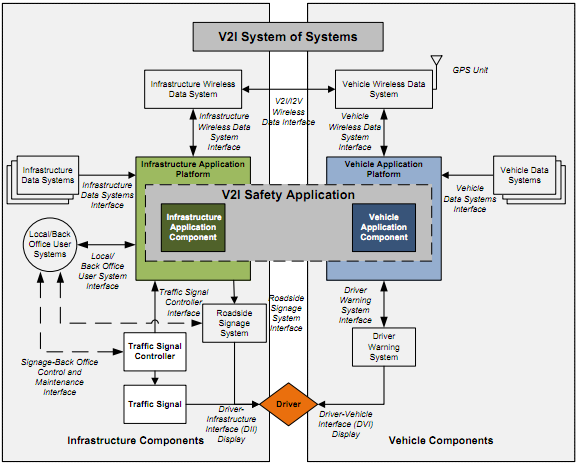 Vehicle to infrastructure (V2I) Architecture (Source: US Department of Transportation)
Vehicle to infrastructure (V2I) Architecture (Source: US Department of Transportation)
The infrastructure application platform offers a support interface for exchange of data with various data systems, local user systems, traffic signal controllers, and roadside signage systems. The infrastructure application component relays alerts via dynamic message signs that is visible by approaching vehicles. On the other hand, the vehicle application platform offers a support interface for a collection of information from the various vehicle and driver warning systems via a driver-vehicle interface display. Vehicle application component relay messages via the driver warning interface that is vehicle-specific or similar to the messages displayed by static roadside signs. The safety application of the V2I systems coordinates the display of both the in-vehicle and roadside messages to drivers. Vehicle-specific messages are meant for drivers and are more cautious than the roadside signs. The former must not conflict with the latter.
V2I and SPaT
More emphasis on the application of V2I is done on SPaT. The SPaT applications focus on the capability of the V2I technology to coordinate the driving speed with the patterns of a traffic light to optimize the vehicle’s fuel economy and its speed. There are several benefits of this application: by integrating information from various vehicles, the SPaT patterns are optimized to enable the optimal flow of vehicles on high-traffic highways. Also, the fuel economy of the car is maximized by minimizing the consumption of fuel during starts and drops.
(Source: US Department of Transportation)
Conclusion
In conclusion, the main objective of V2I is to create a communication network between several vehicles on roads and between the vehicles and roadside components/devices (infrastructure) to improve safety, convenience, and efficiency. This technology enables a direct connectivity between several vehicles and infrastructure within a defined vicinity. Safety is the main objective of implementing V2I systems on the road which enables avoidance or collisions hence saving lives. With this technologies, automated emergency maneuver such as steering, decelerating, and braking is easily affected. Since V2I is essentially a concept, upon its implementation, road fatalities would be significantly reduced as well as costs incurred on health care.
About RGBSI
At RGBSI, we deliver total workforce management, engineering, quality lifecycle management, and IT solutions that provide strategic partnership for organizations of all sizes. As an organization of engineering experts, we understand the importance of modernization. Our engineering solutions provide clients with agility and enhancement through optimizing the value chain to meet industry protocols and full product specifications. Learn more about our automation and digital engineering services


